Few places in Ancient Greece were as important as Ancient Olympia. The site where the Olympic Games took place was one of the most sacred places in Greece, and is a popular attraction today. Here’s some information about Ancient Olympia Greece.
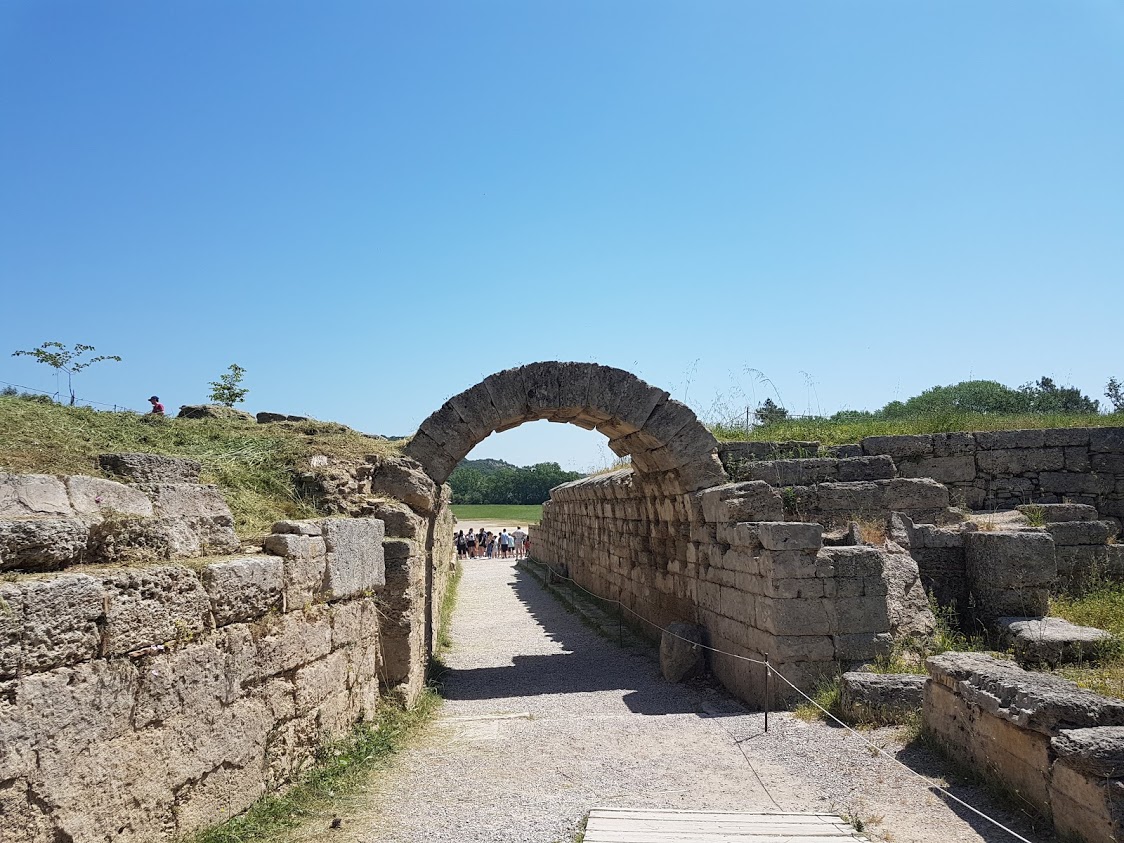
Where is Ancient Olympia
Ancient Olympia is a large archaeological site in the Western Peloponnese. It is one of the 18 UNESCO world heritage sites in Greece.
It is just over 300 kms, or a three and a half hour drive, away from Athens. If you are touring the Peloponnese, Olympia is about an hour and a half away from both Patras and Kalamata.
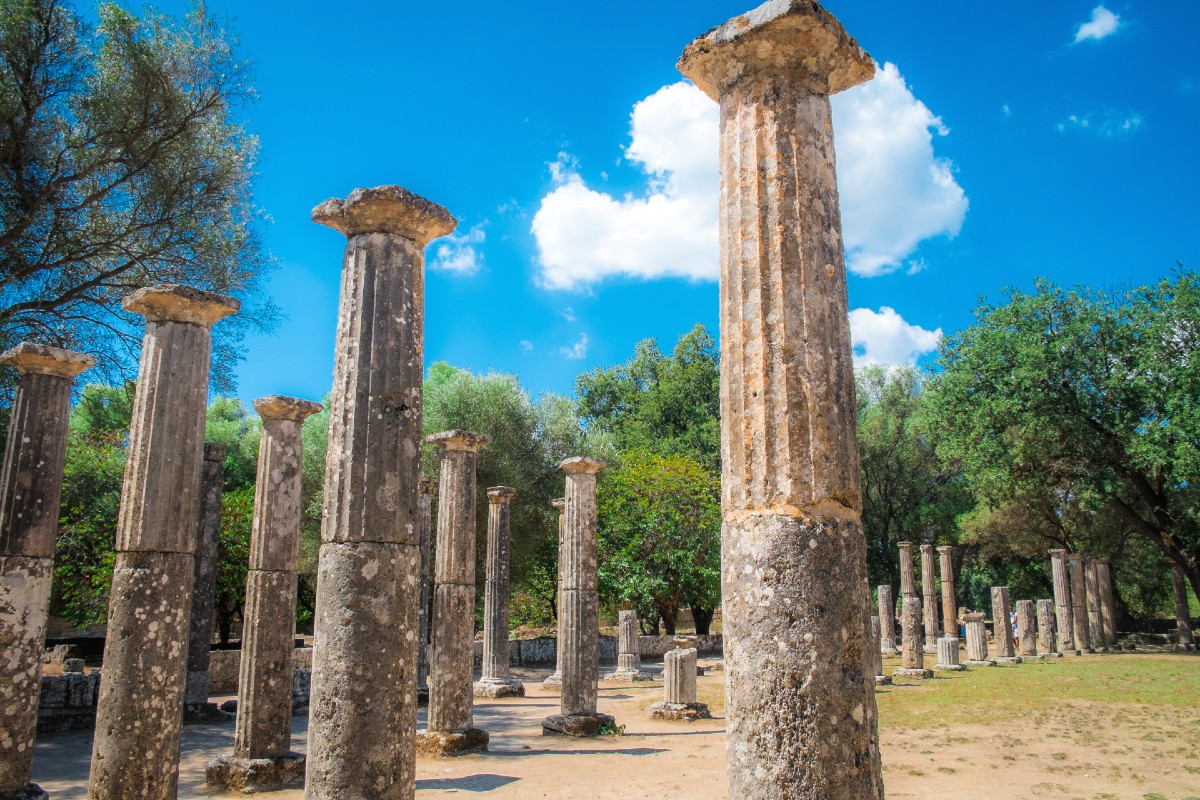
It would technically be possible to visit Ancient Olympia on a day trip from Athens. However, it makes much more sense to include it in a longer trip around the Peloponnese.
Alternatively, you could combine Olympia with some other ancient Greek sites, such as Mycenae and Epidaurus.
Why was Ancient Olympia so important?
Ancient Olympia is where the Olympic Games were born in 776 BC. These games, organized to honour Zeus, were the biggest athletic and cultural event of the time. The Olympics took place every four years until 393 AD, when they were discontinued.

Initially, contestants in the Olympic Games were only Greek men from the immediate area of Olympia and the nearby Elis. Gradually, participation was extended to all men of Greek background.
Women were banned not only from competing in the Games, but also from being in the audience!
The Olympic Games started off as a series of races, which happened over the course of a day. They quickly grew into a much bigger event, incorporating several sports and lasting for five days.
The area of Olympia became very important, and the cult of Zeus grew to an unprecedented degree.
Take a look here for more information on the origins of the Olympic Games.
What can we see today in Ancient Olympia?
Visitors walking around Ancient Olympia today will find it difficult to imagine what the original site would have looked like. This is the case with many other ancient Greek sites, such as the archaeological sites in Athens or Delphi.

Originally, the site was home to a sacred forest, a few ancient temples and sanctuaries. The first temple in the area was dedicated to Mother Earth. This was later replaced by a temple of Hera, which was probably built around 650-600 BC.
Gradually, as the Olympic Games grew bigger, a whole new city was created to accommodate the event. The Olympic stadium, the hippodrome, administrative buildings and accommodation facilities were introduced.
One of the most important buildings was the grand temple of Zeus, dedicated to the king of the twelve Olympian gods.
As the Byzantine Empire prevailed, the Games were discontinued. The temple of Zeus was likely demolished in 426 AD, in an attempt to abolish the ancient cult.
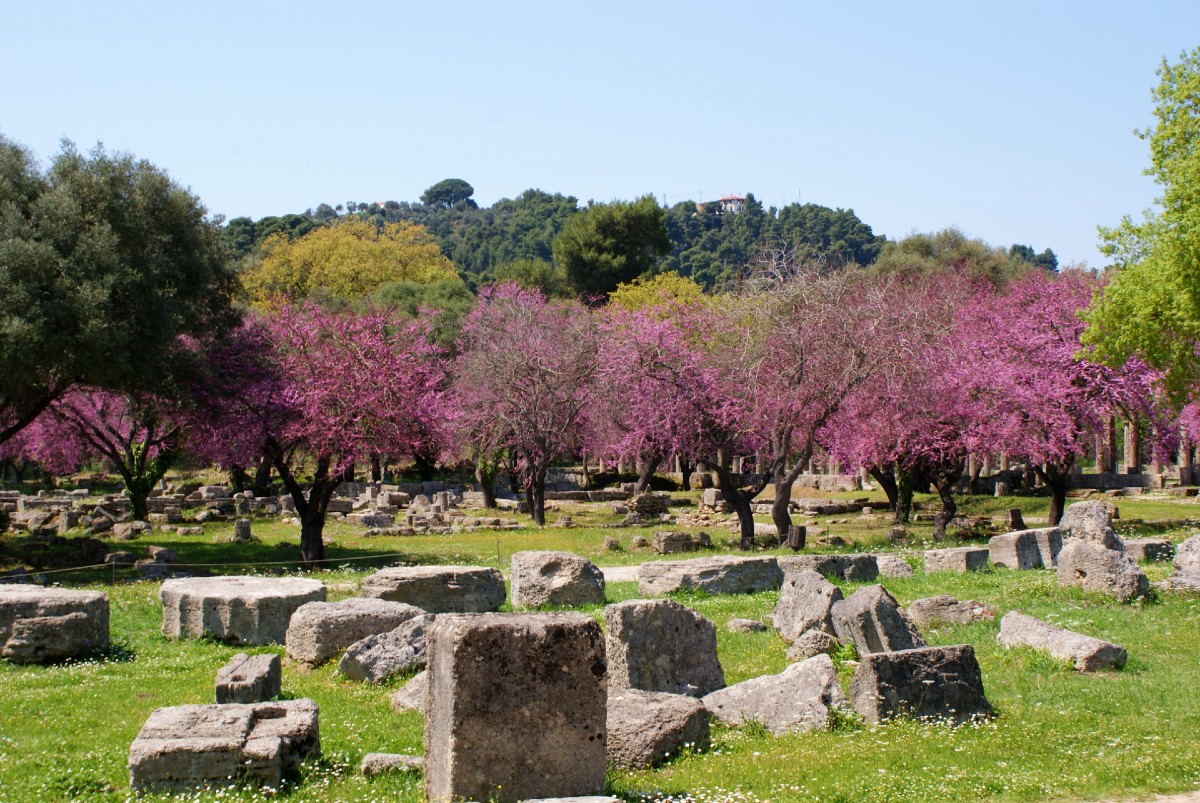
Subsequent earthquakes, floods and other natural phenomena may have contributed further to the site’s destruction. Tons of mud and debris covered the ancient city, which remained hidden for many centuries.
Ancient Olympia today
Ancient Olympia was rediscovered in the 17th century. Excavations started in the 18th century, and are ongoing. The ruins that we can see in Ancient Olympia today are what has survived from that glorious era.
The archaeological site is pretty big, and you will enjoy walking around the beautiful nature and ancient ruins. The excellent museums are very informative, and offer a lot of information about the Ancient event.
If you can, set aside one full day to explore them and make the most of your visit.
The Temple of Zeus in Ancient Olympia
One of the most important buildings in Ancient Olympia was the Temple of Zeus. This majestic Doric temple was built in 470-457 BC. As was often the case, it was built over another ancient site.
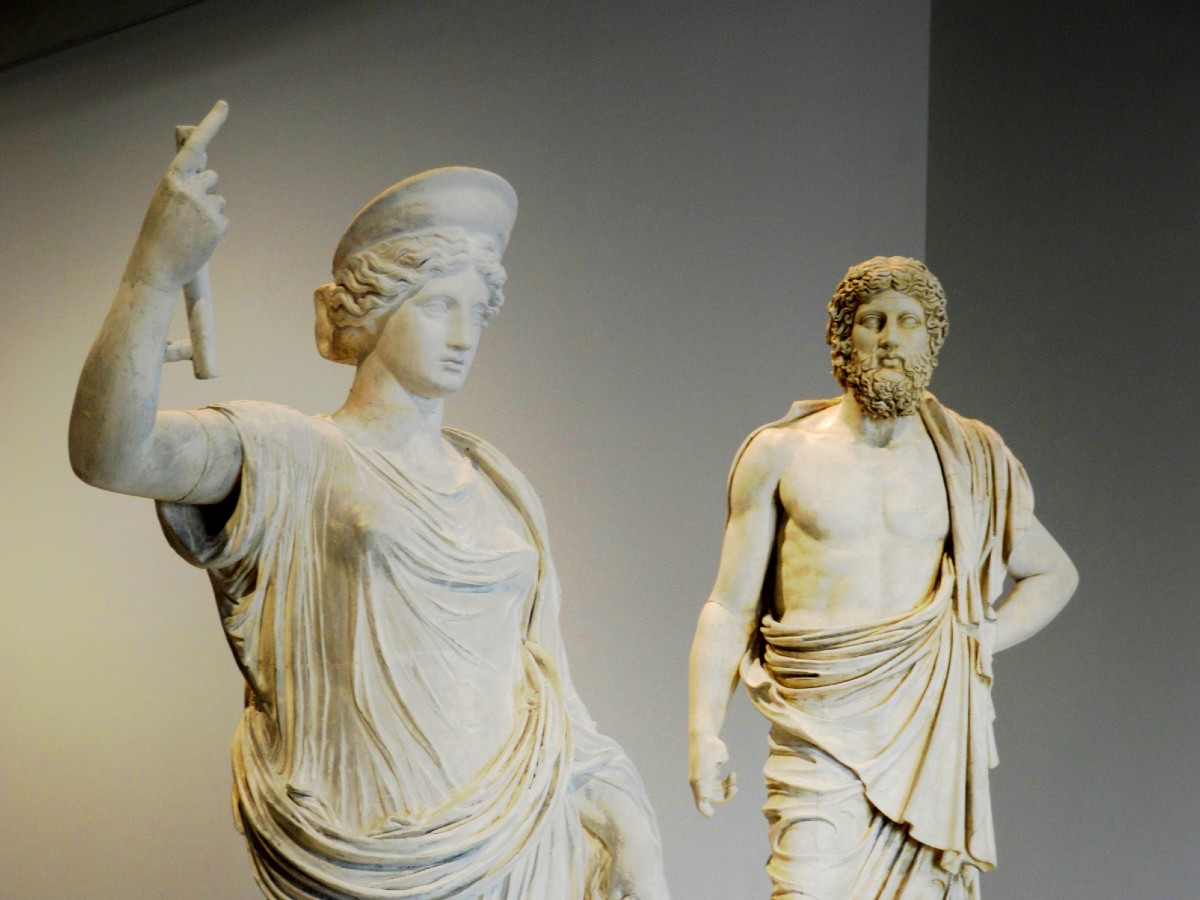
In fact, the area was already home to a much older temple of Hera. It seems that the two cults were somehow merged together at some point. It makes sense, as Zeus and Hera they were not only husband and wife, but also brother and sister!
According to Pausanias, a prominent ancient Greek geographer, the temple of Zeus measured 29×70 metres, and was 21 metres tall. In comparison, the Parthenon on the Acropolis measured 31×70 metres, and was 14 metres tall.
Unlike the Parthenon though, the temple of Zeus was made of poor quality limestone and stucco. The white marble used for so many other temples in Greece was only used for the roof.
Extensive decorations were added, depicting several scenes from our rich mythology.
The sculptor Phidias was commissioned to create a large statue of Zeus, out of gold and ivory. It would be similar to his other famous work, the statue of Athena in the Parthenon.
Phidias and his team completed the 13-metre tall masterpiece around 435-430 BC. Parts of the temple had to be temporarily removed for the statue to be placed inside.
The majestic sculpture was subsequently considered to be among the seven wonders of the ancient world. Sadly, it was destroyed in early Byzantine times.
In 2004, when Athens hosted the Olympic Games, one of the temple’s broken columns was restored to its original state. This helped visitors to imagine the original size of the temple.
The Ancient Olympia Stadium
The Olympic Games originally consisted of racing events. More sports, including equestrian events, were added later on.

Most of the competitions, such as races, javelin, shot put, pentathlon and wrestling, took place in the Stadium. Unlike other Greek stadiums, the one in Olympia had no seats, so the audience typically sat on the ground.
Wooden seats may have been constructed during the Roman Era. Over the centuries, the stadium was redesigned and expanded. It is estimated that the stadium could fit an audience of about 45,000 people.
Remains of the Stadium can clearly be seen today. During the Athens 2004 Olympic Games, the shot put event was organized here.
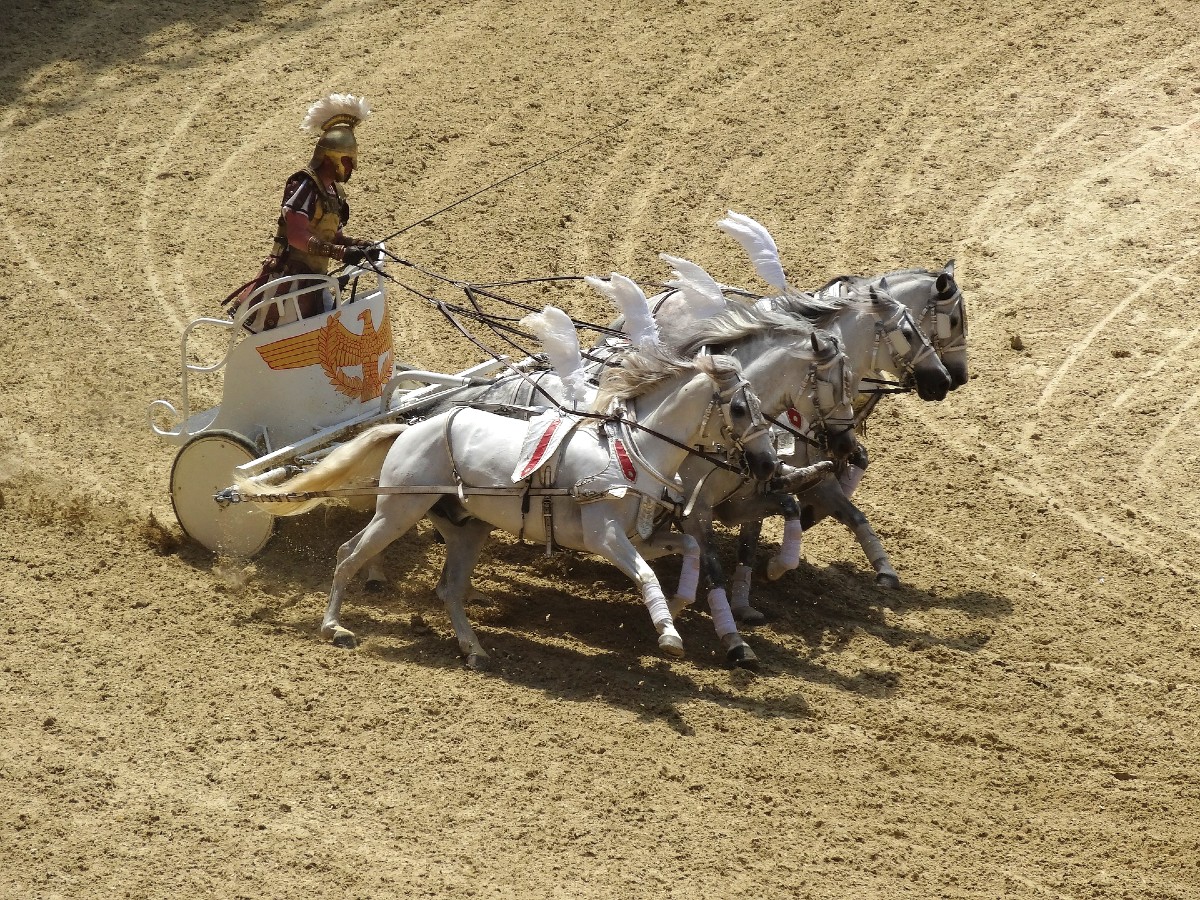
One of the most impressive monuments in Olympia was the large hippodrome. Unfortunately, it was totally destroyed in later years, and its exact location remains unknown. Pausanias describes it as a large flat area, which was roughly 780×320 metres.
The audience gathered around the hippodrome to watch the horse races and chariot races. The most appealing spot was the starting point, where the horses were released. A unique system was put in place to allow the horses to start racing at different times.
Other buildings in Ancient Olympia
Apart from the temple, stadium and hippodrome, many other buildings were constructed to facilitate the staging of the Games. Unfortunately, very little of the magnificent constructions has survived.
The bouleuterion was one of the oldest buildings in Ancient Olympia, where the organizers, senates and possibly umpires were based.
Here is where the athletes were registered for the Games, and discussed the procedures and any objections. It’s also where they took the Olympic oath, next to another statue of Zeus.
The prytaneion was the administrative centre for the Olympic Games and the sanctuary’s political life. This was where the magistrates of the sanctuary were based. According to Pausanias, an everlasting flame burnt in the prytaneion.
The covered gymnasium was built during the Hellenistic years, and was as big as the stadium. Athletes could comfortably train for their races inside the gymnasium, regardless of the weather conditions.
The adjacent palaestra was used for athletes to train for boxing, wrestling and pankration.
The Leonideo, one of the biggest buildings in Olympia, was reserved for officials to stay during the Games. It was built around 330 BC, and renovated at least twice during the Roman Era.
Other guesthouses were built in later years, to accommodate visitors.
The nymphaeon of Olympia was the ancient aqueduct, constructed by Herodes Atticus in 160 AD. Its purpose was to carry much needed drinking water into the ancient site.
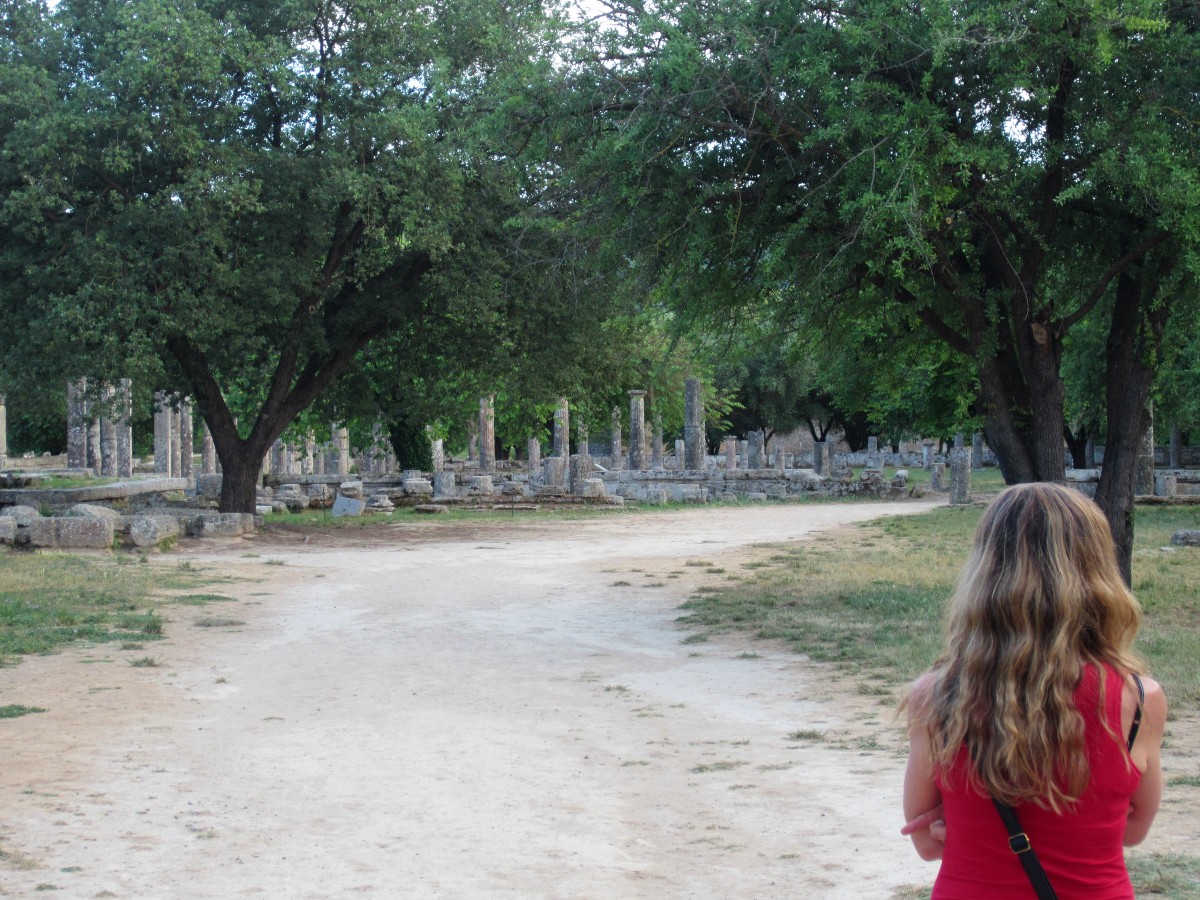
Other buildings, such as stoas and treasuries existed in the area. Additionally, Greek baths and later Roman baths were in use, for the athletes to be washed. There were also many smaller temples, statues, sanctuaries, other ceremonial constructions and Phidias’ workshop.
To get an idea of what the site looked like at its peak, have a look at this video on YouTube.
The museums in Ancient Olympia
Museum fans rejoice! There are three museums in Ancient Olympia, each one exploring a different aspect of the ancient site.
The Archaeological Museum of Olympia takes us through the history of the site of the Olympic Games. It is one of the most interesting museums in Greece, and it contains an impressive number of findings.
I found the figurine collection particularly impressive, while the gargoyle section was also quite unusual.
There are also many statues, sculptures, terracotta and bronze collections. After visiting the museum, you will have a clearer image of the cult of Zeus.
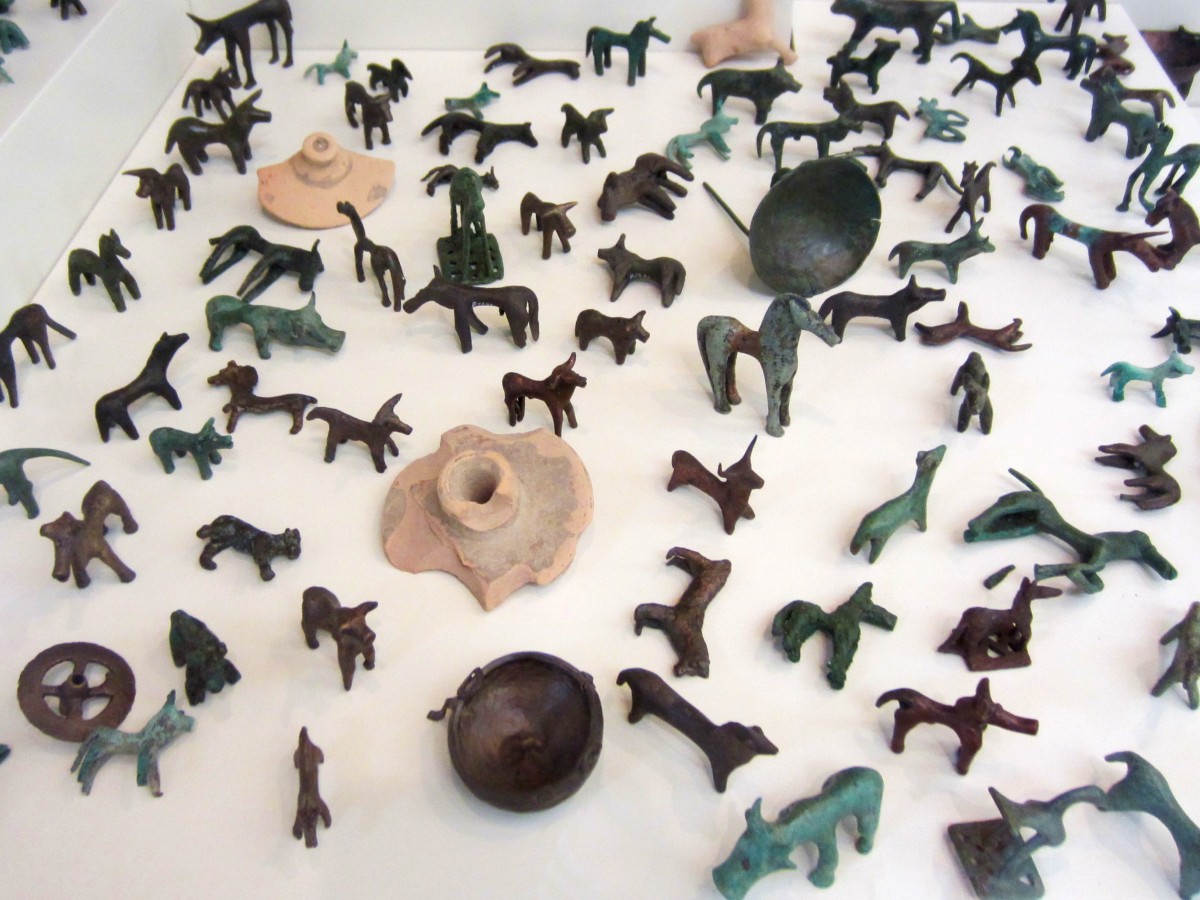
The Museum of the History of the Olympic Games of Antiquity aims to familiarize visitors with the Ancient Panhellenic Games. These included the Olympics, and also the Pythian, the Nemean and the Isthmian Games.
There are hundreds of exhibits from Olympia and other sites in Greece. You can see some of the equipment that athletes used, vases, vessels and figurines.
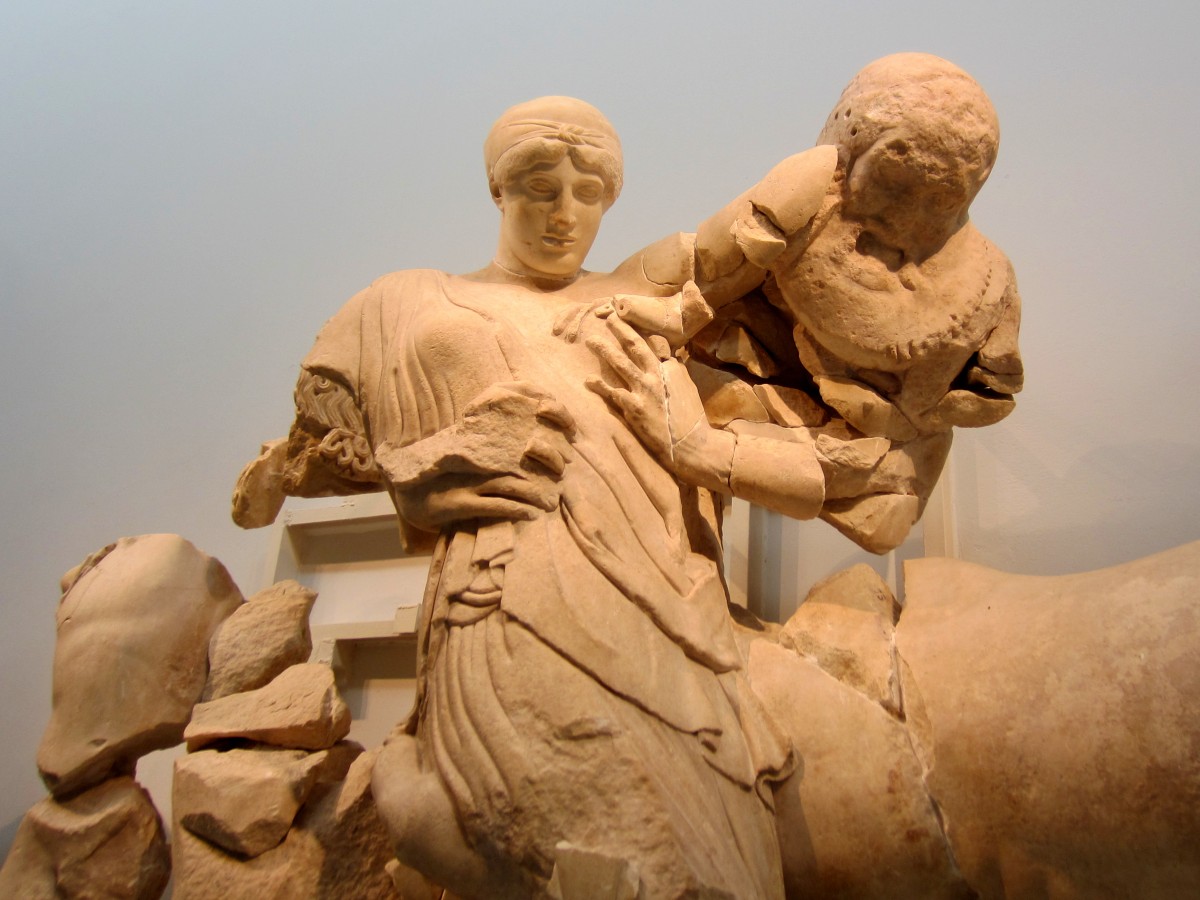
Finally, The Museum of Excavation History in Olympia contains photos and other materials, explaining the history of excavations in Olympia. Excavating the ancient site has been one of the largest archaeological projects in Greece.
Visiting Ancient Olympia
The easiest way to visit Ancient Olympia from Athens is to rent a car. However, it is also possible to use public transportation, known in Greece as a KTEL bus.
To get to Olympia from Athens you will first need to take a KTEL bus to Pyrgos town, and then take an onward local bus. Buses to Pyrgos take around 4 hours, and the local bus to Olympia takes around 30 minutes.
You can find more information and book advance tickets at the official KTEL Ileias website. A return ticket to Pyrgos costs 55 euro at the time of writing. You can buy tickets for the onward bus on the spot.
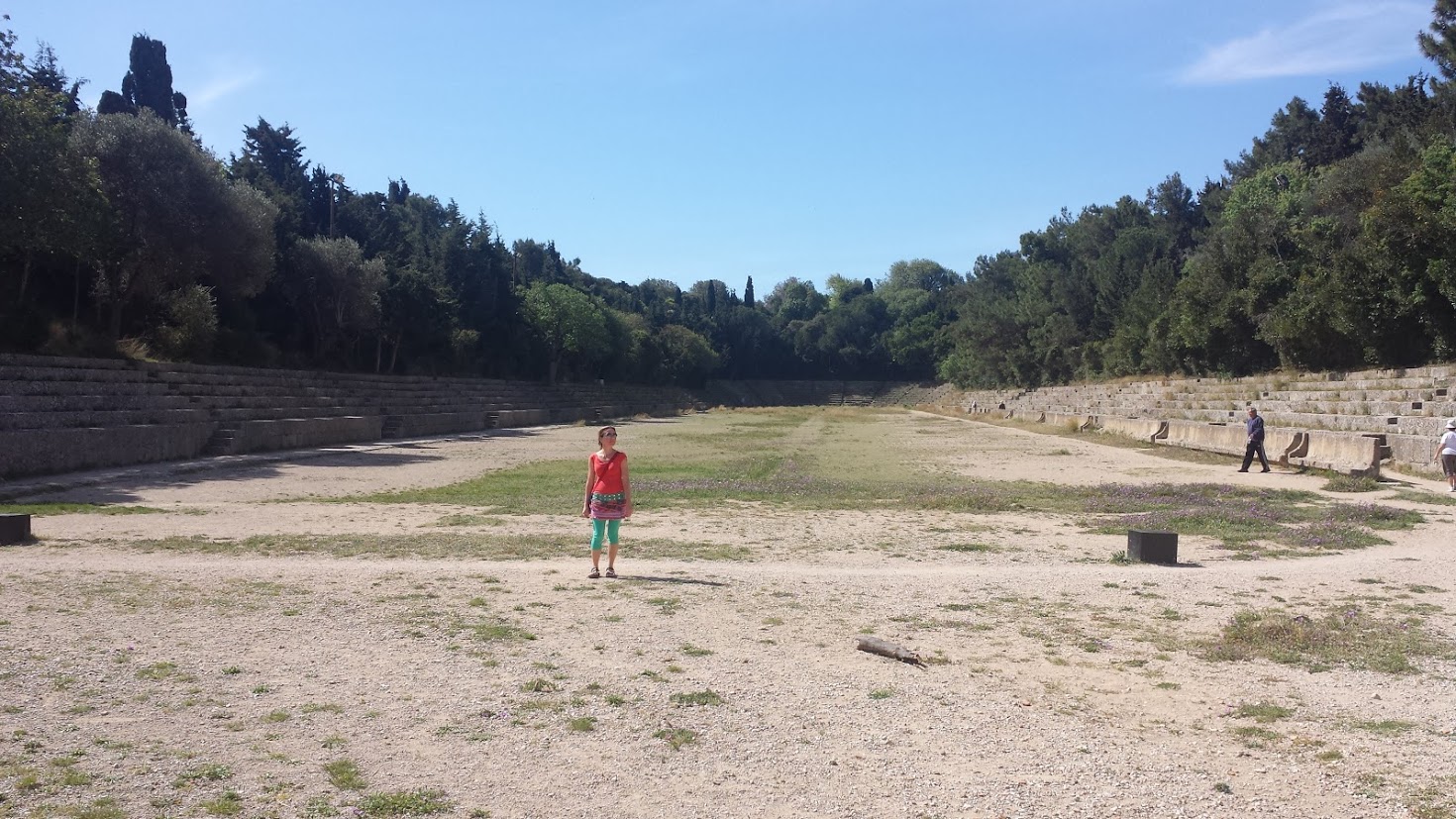
The site closes at 20:00 in summer, and at 15:30 in winter (November – March). If you are visiting during the shoulder season, check out exact closing time on the official Ancient Olympia website.
Allow several hours to visit the ancient site and museums. Unless you are taking a guided tour which includes transportation, it is best to stay overnight in the small town. There are plenty of options in terms of hotels and restaurants.
If you are visiting independently, you could consider booking an inexpensive guided audio tour of the ancient site, so that you can learn more about it.
If you are visiting Olympia in summer, it’s best to walk around the site very early in the morning, or late in the evening. You can visit the museums during the hottest part of the day, and avoid the scorching sun.
Remember to bring a hat, sunscreen, and sunglasses!
Ancient Olympia in the Peloponnese
Have you been to Ancient Olympia? What did you think to it? Let me know in the comments!

Hi! I’m Vanessa from Athens, and I love exploring the ancient sites around Greece. I really enjoyed visiting ancient Olympia, and reading about its rich and interesting history. I hope my article has inspired you to visit when you travel to Greece. Feel free to like my FB page for more Greece-related info!
